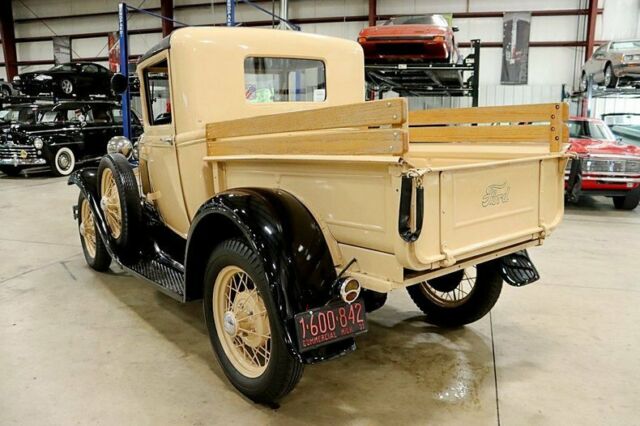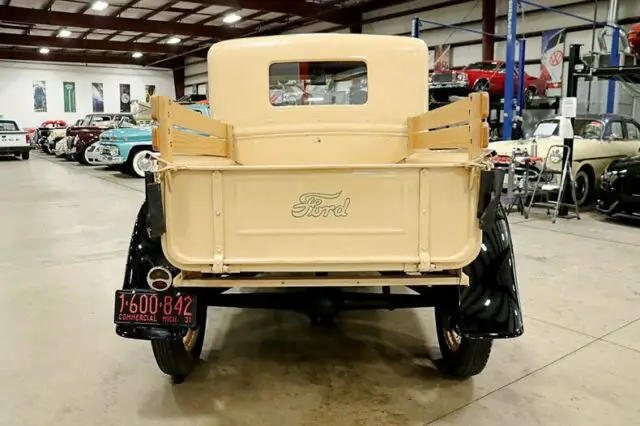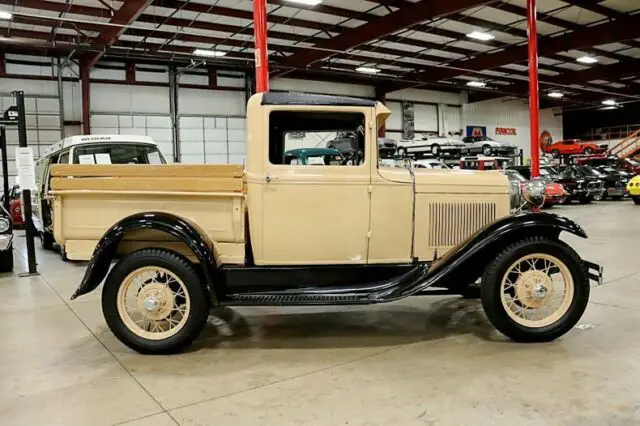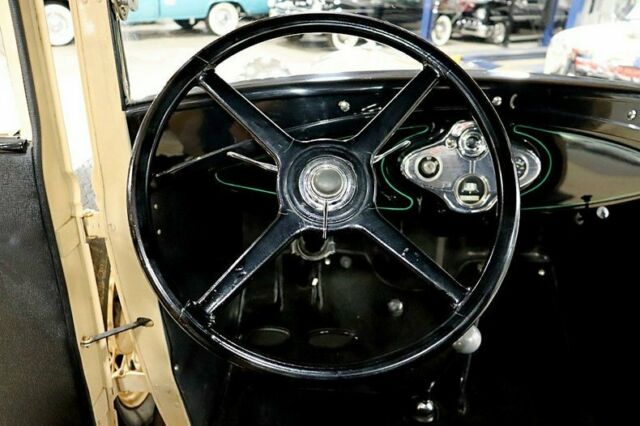|
GR Auto Gallery is pleased to offer this 1931 Ford Model A Pick-Up for your consideration. The truck is powered by a smooth-running 3.3L I4 that is mated to a 3-speed manual transmission. This beautiful piece of history appears to have the proper engine and transmission for this era. The cream over black fenders exterior creates a wonderfully classic look. Although the exterior is beautiful, so is the interior. With its classic color-matched spoke wheels including the spare on the... side, the wonderfully designed fenders sliding along the side into its running boards then back again to fenders painted in gloss black, there isn't a bad angle to this great ride! The wood bed also features wooden bed rails. Now is your chance to own a wonderful Model A that is all steel and in great working condition. Please call or email today with any questions or for additional information. The Ford Model T had dominated the automotive market from the mid-1910s through the early 1920s but started to erode as competitors began catching up with Ford's successful mass production system. It had become apparent to most in the company that it was time to begin a new model, but Henry Ford was resistant. With "luxury" features coming out such as electric starters in most of General Motors products, newer exterior designs fit the era they were entering, Ford was forced to compete and began their Model-A design. At first, Henry did not want to worry about looks or features but to spend their energy on the mechanical aspects which had been the primary reason for success on their Model T. Although many improvements with the engine power and overall stability were improved, it proved to be short of what was necessary, a new cosmetic appeal. For this Henry called upon his son, Edsel, who showed how successful it could be with his design. After years of compliments on its curb appeal, Henry started to take credit for it himself although his son was more hands-on with this project. The era of mass production had officially passed and the era of "flexible mass production" had begun and regardless of who was more responsible for this model, Ford, in general, showed once again how well they could adapt and stay on top.
|
 Home
Home Contact us
Contact us NEWEST CARS
NEWEST CARS SELL YOUR CAR
SELL YOUR CAR FAQ
FAQ




















